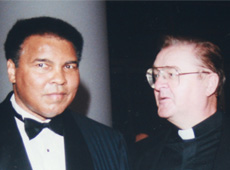Stakeknife: Truth about our dirty war just too shocking to ever be revealed
Posted By: October 23, 2015
Brian Rowan. Belfast Telegraph.Friday, October 23, 2015
The story of Stakeknife is when the dirty war becomes the filthy war.
And for this reason.
Here is an agent working for Military Intelligence whose role within IRA internal security was the culling of other agents; finding them, interrogating them – presenting them for execution.
He may even have pulled the trigger.
The end was usually a body dumped at some roadside or on some lane.
So this new investigation is in a very clear context.
The victims were suspected CHIS (covert human intelligence sources) who may have been killed by another agent.
This is how grubby and how ugly that filthy war became.
“It’s far bigger than Nelson,” one source commented. “It’s colossal”.
Brian Nelson was an Army agent working inside the UDA; a headline case that may well be reduced to smaller print if the Stakeknife story is revealed in all its detail.
It is not just about Freddie Scappaticci, who fled Belfast more than a decade ago, denying the agent allegations.
That denial is dismissed by others. Others who should know.
In May 2003 I met him at a solicitor’s office a few days after he had been publicly named as an agent and I was able to ask a few questions before the interview was stopped.
Scappaticci said he had been involved in the republican movement, but added: “I have no involvement this past 13 years.”
That meant since 1990.
Days before I met him I had spoken to a former senior Special Branch officer who told me that the Stevens Investigation planned to question Stakeknife about murders.
This included the killing of Joe Fenton in 1989, “executed” as an alleged informer.
Stakeknife may have been the gunman.
Any investigation will look at all of this in a wider frame. It is not just about the agent.
What information was available to Military Intelligence, to those who handled him and knew his role?
What did others in the intelligence world know about Stakeknife?
Could an agent have been involved in 20-plus killings without somebody knowing?
Why has there not been an investigation before now?
Stakeknife survived the dirty war, but will live his life looking over his shoulder.
Is he untouchable? A protected species? Someone who knows too much and who could bring the roof down?
Is his past too ugly to be revealed? What is the trail of information? Where does it lead? Who does it lead to?
There are many questions.
And where does this story fit in to the past?
At the Stormont talks there is a battle being fought over draft legislation to shape a new Historical Investigations Unit (HIU) and Independent Commission for Information-Retrieval (ICIR).
That battle is over what is seen as an attempt to tie the past within some national security straitjacket; to conceal rather than release information.
Stakeknife, and these latest developments, are an indication that the past will not disappear in the drawing of some line or lines.
But these searches for information often end up at brick walls.
Following the agent trails, looking for the handlers, trying to find out who knew what and when, all of that is seen as trespass on that ground and in those places of national security.
The reading between the lines of Stakeknife suggests something very ugly indeed; it suggests a war without rules and a deadly game in which many who may have felt protected became pawns in a play.
And, however big this story, Stakeknife was but one agent in a hidden play involving many other agents. The Army considered him to be their most prized asset operating inside the IRA.
Other intelligence agencies had other agents.
Will we ever know the full story, the full truth?
The answer to that question is no.
Hidden under the stones is something that is too ugly to be revealed.










